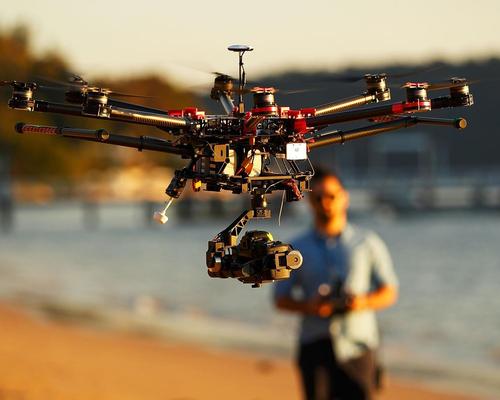13 Nov 2017
IAAPA 2017: Obama advisor talks challenges and rewards for drone use in attractions
BY Tom Anstey

Former White House advisor Lisa Ellman has laid out the opportunities drones can offer US attractions, also discussing rules and regulations and how to navigate such challenges.
With rapidly changing technology for unmanned aircraft systems making them smarter, more capable and more affordable, drones are increasingly being put to work with success across industry.
Ellman, now a partner for law firm Hogan Lovells, chairs the firm's Unmanned Aircraft Systems practice, a group dedicated to helping businesses succeed in the drone marketplace. She has held a variety of positions at top levels of the executive branch at the White House and the US Department of Justice (DOJ). Most recently, under the Obama administration, she worked on drone policy, helping to integrate the national airspace in terms of bringing drones into the equation.
Drone Safety
“The technology has moved so quickly forward that what used to be considered a toy is now a tool of industry,” said Ellman, speaking during the IAAPA Expo taking place in Orlando, Florida.
“Their uses are really limited only by our imagination. While that’s incredibly exciting, it also presents a number of challenges on the public policy front, and as policy catches up, drones are really taking off.”
According to Ellman, 2017 has been the “year of drone security”, with the government looking to expand drone operations beyond that which is currently authorised for better commercial use. This legislation has been held up by national security agencies however because drone use would enhance without relevant security policy keeping pace, remote identification of drones being a key part of the discussion.
“Remote identification is very important,” said Ellman. “Is that a news gathering drone flying over my theme park? Is that a hobbyist? Is that a criminal? We’re worried about the careless, the clueless and the criminal. Remote identification can address that. It’s the key to expanding drone operation and moving it forward and it’s key for those of us worried about security so we know who is flying over our amusement park.”
Another issue for attractions operators is public use of drones in operations such as theme parks. While the law is currently restrictive, these issues will likely be addressed soon, says Ellman.
“In an amusement park scenario, I want to be able to keep others out of my airspace. A hobbyist thinks it would be fun to fly near my ferris wheel. What can you do to keep them away?” she said.
“You can jam a drone by taking down it’s signal. Drones can catch other drones with a net. You can takeover a drone using a computer. There are even eagles being trained to take out drones.
“However, right now, the status quo means there’s not a lot you can legally do. You can passively identify, detect and track a drone but you can’t take it down because a drone is currently considered an aircraft. Those laws will likely be changed over time but that’s where things are.”
Drone Management
While not much can be done to stop drones right now, Ellman suggests attractions develop a protocol for handling incidents involving the devices.
“Facility owners should create a drone toolkit,” she said. “Your employees need to know what they should do when they spot a rogue drone. The key is being able to enforce the law on the backhand.
“Right now it’s all about evidence gathering – give your employees a list of questions that they should be answering as they gather evidence when something like this occurs. Know what the federal and local laws are for drones in your area and give them contact information for your local Federal Aviation Administration (FAA) regional operation centre, they are the ones who should be coordinating with local law enforcement.”
Drone Use
Under the Trump administration, last month a new programme was announced addressing drone use for commercial purposes, something that could provide a major boost to the industry.
Called the Unmanned Aircraft System Integration Pilot Programme, the scheme asks all stakeholders involved — pilots, private citizens, local authorities, park officials and others for their ideas on regulations for drones.
“The idea is that states and localities can apply to participate in the pilot programme and they would partner with industry for commercial projects,” said Ellman.
“Whatever it might be, whatever the benefit, it’s all about the data and how it can enhance safety and efficiency. A lot of those benefits require breaking rules – flying over people, flying at night, flying out of sight for example. Under the new scheme, the idea is there will be many waivers to do lots of different things and create a hub of innovation across the country – petri dishes of innovation. Give a town an opportunity to provide services outside the scope of current rules.”
Legislation
The majority of US states are currently considering legislation that would limit or prohibit drone use in some way, says Ellman. Lots of states have enacted such legislation while others are adopting resolutions to such issues.
“There was recently a case that saw a ban on drone use in a community,” she said. “The question was asked if that was legal and the answer was no, because it fell under FAA legislation.
“Right now there's a bunch of working groups, the drone advisory committee, different pathfinders – essentially all of the industry – working with the government to provide new data.
“The key is bringing policy makers together. Innovation is moving so quickly but policy is also key, particularly around safety and privacy. There are a lot of open questions right now in regards to regulation. Bringing policymakers together with innovators will mean we can craft solutions for this industry in order to move forward.”
Check back with Attractions Management and AM2 during the week for all the latest breaking news from IAAPA 2017
Close Window